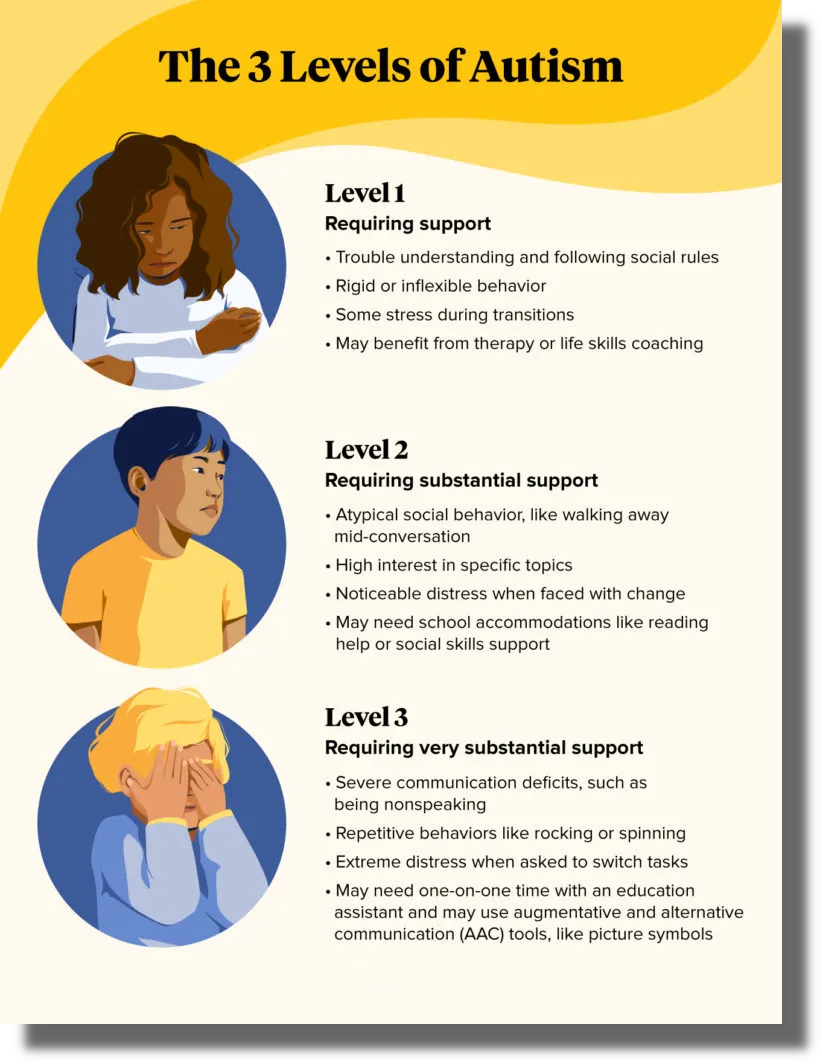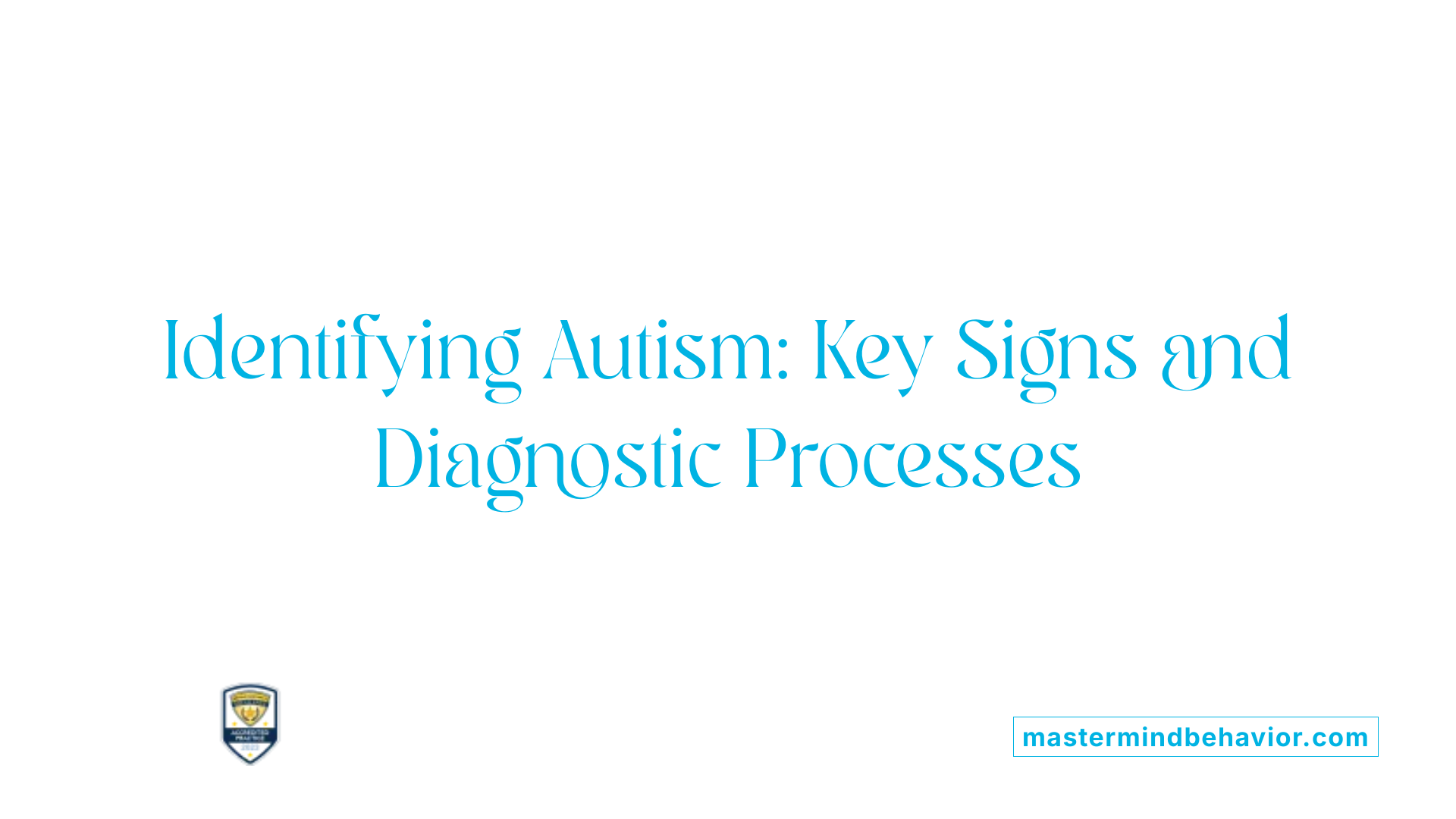How an Autism Therapist can transform everyday life for those managing ASD
How an Autism Therapist can transform everyday life for those managing ASD
Blog Article
Recognizing the Influence of Behavioral Autism on Day-to-day Live and Social Interactions
You could not recognize just how deeply behavioral autism influences everyday life and social communications. Individuals on the spectrum frequently navigate a world loaded with communication difficulties and sensory overload. These difficulties can lead to frustration and isolation, affecting their partnerships and general wellness. Recognizing these subtleties is important for fostering helpful settings. What methods can we execute to develop more meaningful links and inclusive areas? The responses might surprise you.
Specifying Behavioral Autism and Its Features
Behavior autism, typically described as autism range problem (ASD), encompasses a variety of problems characterized by obstacles in social interaction, communication, and recurring behaviors. You might notice that people with ASD typically battle to interpret social hints, which can lead to misunderstandings in discussions. They might find it difficult to develop eye call or involve in little talk, making social situations feel overwhelming.
Communication problems can materialize in various ways, from delayed speech development to a choice for using fewer words. By recognizing these qualities, you can cultivate an atmosphere that promotes approval and urges effective interaction, helping people with autism thrive in their everyday interactions.
The Spectrum of Autism: Comprehending Variability in Behavior
Autism spectrum disorder (ASD) isn't a one-size-fits-all diagnosis; it varies commonly among individuals. You might notice that some people with ASD exhibit mild symptoms, while others may face much more considerable difficulties. This variability can show up in habits, interests, and sensory sensitivities. You might encounter people who are highly verbal and engage conveniently in conversations, while others could favor singular tasks or connect non-verbally.
Moreover, the means people with ASD react to sensory input can differ considerably; some may be overwhelmed by brilliant lights or loud noises, whereas others thrive in boosting environments. The spectrum also consists of differences in social communications; some people may struggle to analyze social signs, while others browse social setups with relative convenience. Understanding this variability is vital, as it aids you appreciate everyone's distinct experience and tailor assistance to their specific needs, cultivating an extra comprehensive environment for everyone.
Interaction Challenges Dealt With by People With Autism
When you communicate with people on the autism range, you may observe their unique interaction challenges. They often deal with difficulties with both nonverbal and spoken cues, which can impact their social interactions. Understanding these barriers is crucial for fostering far better connections and assistance.

Verbal Communication Problems
Many individuals on the autism spectrum experience verbal communication problems that can significantly impact their daily communications. Your tone, rate, or quantity might not align with social assumptions, triggering others to misinterpret your intentions. Acknowledging these difficulties can assist you and your assistance network create techniques to enhance communication and foster much better links with others in your day-to-day life.
Nonverbal Communication Barriers
Verbal communication isn't the only challenge individuals on the autism spectrum face; nonverbal interaction barriers can be just as considerable. These obstacles can lead to misconceptions or false impressions of social cues, making communications really feel frustrating or complex. By attending to nonverbal interaction, you can locate strategies to improve your social experiences and enhance your overall high quality of life.
Social Communication Effects
Social interactions can usually really feel frustrating because of the one-of-a-kind communication challenges faced by people with autism. You might have problem with analyzing social cues, making it difficult to comprehend mockery or body language. This can cause misconceptions or uncomfortable minutes in discussions. Additionally, starting and preserving conversations may feel challenging, triggering anxiousness in social circumstances. You might choose organized settings, making spontaneous interactions uneasy. It's also usual to experience problem in engaging in tiny talk, which can prevent creating new relationships. Recognizing these difficulties can aid you find techniques to enhance interaction, such as practicing social abilities in safe setups or making use of aesthetic aids - Autism Behavioral Therapy. Recognizing your demands permits you to browse social communications with greater confidence and convenience.
Social Interaction and Partnership Structure in Autism
While structure connections can be testing for people with autism, recognizing their special viewpoints and interaction styles can foster significant connections. You might notice that numerous individuals on the range favor direct interaction and might fight with social cues or small talk. By being simple in your communications, you can aid create an atmosphere where they really feel comfy.
Put in the time to listen and observe exactly how they express themselves. This understanding can direct you in steering conversations a lot more successfully. Taking part in shared passions can likewise work as a bridge to much deeper connections. Whether it's a pastime, a favored show, or a mutual passion, these usual threads can open up doors to friendship.
Every Day Life Routine: Navigating Obstacles and Strategies
Navigating everyday life routines can be especially challenging for individuals with autism, especially when unexpected changes occur. You might find comfort in having a structured timetable, as it aids you anticipate what's next. It's typical to really feel overwhelmed or anxious when interruptions take place. To browse these obstacles, take into consideration carrying out visual schedules or lists. These tools can supply clearness and reassurance.
Developing a regimen that consists of sensory breaks can additionally be beneficial. This aids create an understanding setting.
Finally, practice mindfulness techniques to take care of stress and anxiousness. Simple breathing workouts or basing methods can make a substantial distinction. By incorporating these techniques, you can enhance your everyday routine and decrease disruptions, making life feel a lot more convenient.
Toughness and Abilities of Individuals on the Autism Range
Understanding daily life routines is just one element of the autism experience. Numerous individuals on the autism spectrum possess amazing staminas and capabilities that establish them apart.
Furthermore, your memory abilities frequently radiate, particularly in areas of rate of interest. Aba Therapist Near Me. This knack for maintaining info can make you a valuable resource in fields like modern technology, art, or scientific research. You may likewise display strong visual thinking, allowing you to visualize complicated principles and solve troubles creatively
Furthermore, your special perspective on the world can foster empathy and understanding in others, enriching social interactions. Accepting these strengths not just enhances your self-confidence however likewise assists others value the varied talents you give the table.
Producing Inclusive Atmospheres for Individuals With Autism
Developing inclusive environments for people with autism starts with creating sensory-friendly areas that provide to their special requirements. You can additionally promote possibilities for social interaction, helping to develop friendships and links. By making these modifications, you'll add to an click here extra inviting environment for everyone.
Designing Sensory-Friendly Spaces
While designing sensory-friendly spaces, it's important to review the unique needs of people with autism. Begin by choosing soothing shades and soft lighting to produce a comforting setting. Include quiet areas where people can charge and pull away when overwhelmed. You'll wish to lessen loud sounds and diversions, utilizing soundproof materials or white sound equipments to assist preserve harmony. Consider tactile aspects like soft fabrics or fidget-friendly objects that can offer convenience. Ascertain that spaces are versatile, enabling for simple reformation to accommodate various activities. Include visual routines or clear signage to aid people browse the area confidently. By thoughtfully incorporating these aspects, you can create a welcoming atmosphere that sustains sensory requirements and advertises general well-being.
Promoting Social Communication Opportunities
Designing sensory-friendly spaces not just addresses individual comfort but additionally sets the phase for meaningful social interactions amongst individuals with autism. Motivate peer mentoring, coupling people with autism with supportive peers who can assist them via social circumstances. By implementing these methods, you can boost social opportunities, aiding individuals with autism develop friendships and enhance their social abilities in a secure, inviting setting.

Often Asked Concerns
Exactly How Can Pals Assistance A Person With Behavioral Autism?
You can sustain a buddy with behavioral autism by holding your horses, listening actively, and valuing their boundaries. Involve in tasks they appreciate, communicate freely, and develop a comfy setting where they feel valued and understood.
What Resources Are Offered for Parents of Children With Autism?
You can check out numerous sources for parents of children with autism, including support teams, academic sites, and local social work. Linking with other parents can also offer important insights and shared experiences to help browse obstacles.
Can Behavioral Autism Adjustment Gradually?

Yes, behavior autism can alter in time. You might discover changes in interaction, social abilities, and habits as your child expands. Early intervention and support usually play important functions in these developing modifications.
How Do Sensory Level Of Sensitivities Affect Every Day Life?
Sensory sensitivities can make day-to-day experiences overwhelming. You could battle with loud noises or brilliant lights, resulting in anxiety or avoidance. Locating environments that accommodate your requirements can considerably enhance your convenience and overall day-to-day live.
What Prevail Misconceptions Concerning Behavioral Autism?
You might believe behavior autism only impacts communication skills, yet it's even more facility. Many assume individuals lack empathy or intelligence, which isn't true. Comprehending these mistaken beliefs aids foster acceptance and support for those on the range.
Behavior autism, usually referred to as autism spectrum disorder (ASD), encompasses a range of problems characterized by challenges in social communication, communication, and repeated actions.Social interactions can usually really feel overwhelming due to the one-of-a-kind interaction difficulties dealt with by individuals with autism.Designing sensory-friendly spaces not just addresses private convenience but likewise establishes the phase for purposeful social communications among individuals with autism. Motivate peer mentoring, combining individuals with autism with supportive peers who can guide them through social scenarios. By applying these strategies, you can enhance social opportunities, helping individuals with autism build friendships and reinforce their social skills in a risk-free, inviting setting.
Report this page